
This September is quite a special month and it is not because it will be my birthday soon. Nope, in September we are celebrating a great anniversary: it’s the 10th anniversary of the last market crash. For young investors like me (I’m turning 37), this was the only market crash where we lost a few thousand (or more).
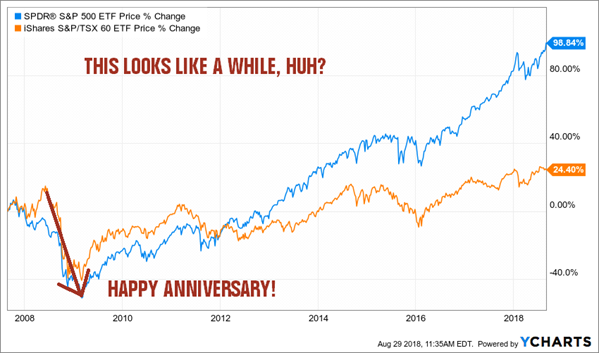
I was part of the lucky investors who didn’t have much money invested in the stock market back in 2008. I wasn’t smarter than anyone else, I just withdrew most of my money to buy a house in 2007. Therefore, my portfolio was down to about $30-40K back then. I didn’t really mind losing 27% of my nest egg at that time! As we ride what seems to be an eternal bull market (don’t take that for granted!), one of my readers asked me a very interesting question.
When is the right time to take profit?
What I liked about his question is that it wasn’t the classic “when it’s the right time to sell?” question. He meant it as “you have holdings in your portfolio showing triple digit returns, when do you sell a part of it?”
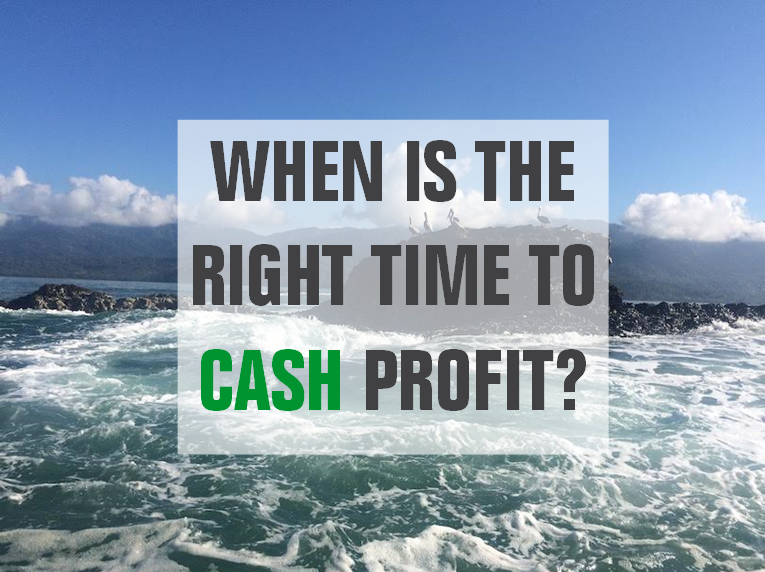
I have a few big winners in my portfolio (Apple, Lockheed Martin, Johnson & Johnson and soon Amazon). Would I ever sell them partially or as a whole? This is the question he was asking.
Let your winners ride… forever?
In an ideal world, I would only have big winners in my portfolio and they would all grow about the same pace. But we all know this is some kind of fantasy we all dream of as investors. The truth is, most of our selections will do good, a few of them will fail us and a handful will end-up in “the best investment of your life”.
I’m all about letting my winners run. I have no rules to sell them partially or completely once they reach 100% or 200% of their original value. My only selling rule is the company must fit with my investment thesis at all time. Therefore, as long as a company shows the reasons why I bought their shares in the first place, I keep them.
Where is the problem?
Unfortunately, you can’t really let your big winners forever. Why not? Imagine your portfolio was composed of 20 stocks with an equal weight at the start. Now imagine that one of those 20 companies was Apple (AAPL) and that you started your portfolio 10 years ago. If you didn’t sell any shares of AAPL over the past 10 years, here’s what you get:
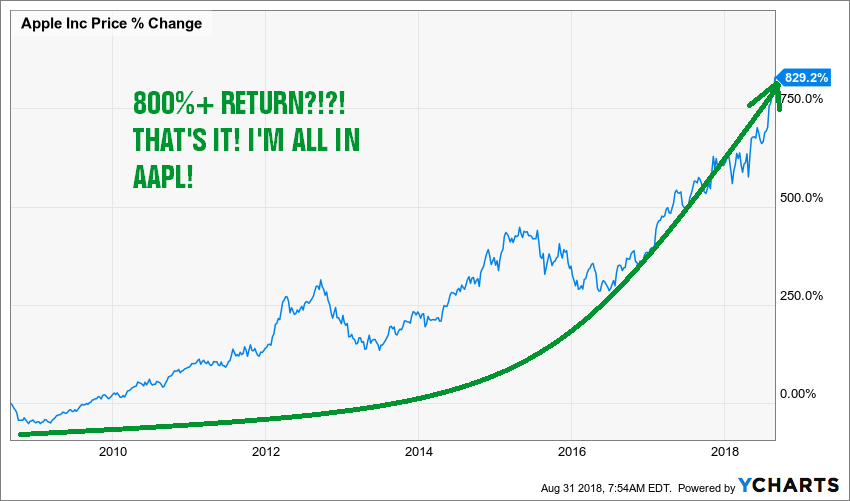
Source: Ycharts
You are probably rich by now and feel very smart. The problem is your portfolio probably look like this:
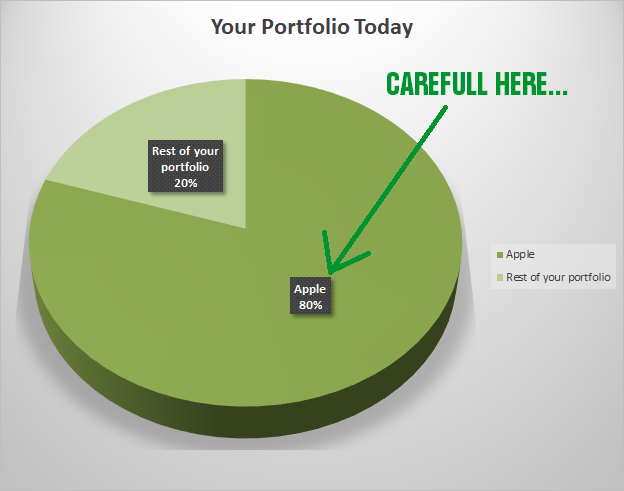
With 80% of your portfolio in a single stock, you only wish Apple doesn’t become Blackberry…
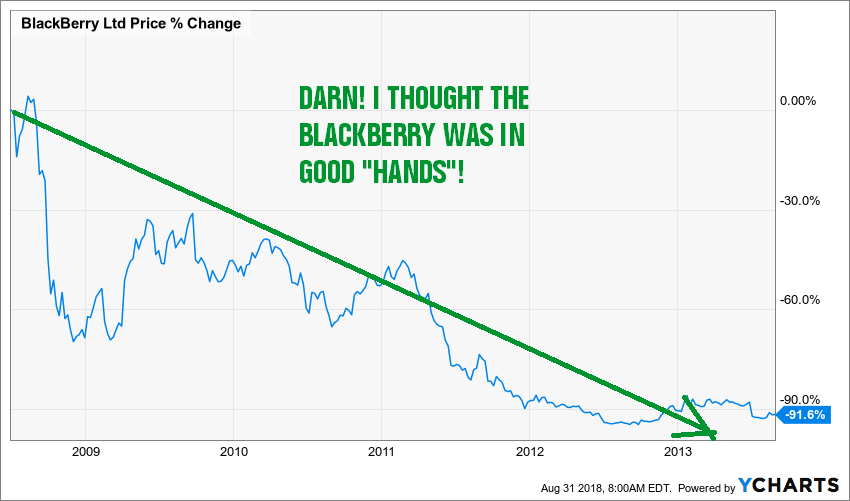
Source: Ycharts
No matter how great the company is and no matter how strong its business model seems, there is always a way to blow it away within a few years. If you want to avoid this unfortunate situation, the only way to do it is to restrain your holdings. Instead of selling according to their investment return, you can sell shares according to their weight in your portfolio.
How much weight is not too heavy?
Ah! That is a tough question to answer! I know because my position in Apple is currently 11.5% of my total retirement portfolio. The impact of seeing AAPL collapse by 50% would be losing almost 6% of my total portfolio value.
I guess the answer to when a holding is too important in your portfolio is another question:
How do you feel about losing 50% of your largest holding?
I have a very high-risk tolerance. Therefore, I think I could live with a 10% drop of my portfolio due to one holding. However, chances are that I may start selling a few Apple shares once it reaches a weigh of 15%. I just don’t want to put too much money on a single stock. Plus, if Apple weights 15% of my portfolio, chances are that techs in my portfolio are over 30%. This is definitely not something I want.
Therefore, when you look at your holding, you almost must consider the weight of the whole sector. I t don’t think any one sector should represent more than 25% of your portfolio. Large industries can be divided into sub-sectors as UPS (UPS) will not react the same way 3M (MMM) and Lockheed Martin (LMT) on the market. However, they are all considered as “industrials”.
How much do you sell?
Since I’m talking about your biggest winners, I will not likely sell half of my shares of Apple in a heartbeat. Chances are I would drop my 15% position down to 10% and wait to see what happens. I would use the proceeds to invest in another sector to rebalance my portfolio.
Final thought
I don’t track my portfolio on a daily or weekly basis. I like to see the movements as a trend and wait for each quarter to review each company. I only look at my portfolio asset allocation once a year. I do that to minimize the amount of trades and reduce the emotions around it. There is always a lot of noise over a whole 12-month period, and you don’t want to waste too much energy trying to figure out what will happen with NAFTA, Chinese trade war and Turkey’s financial problems. Chances are it will all settle down in the next 12 months ?.
The post When is the Right Time to Take Profit? appeared first on The Dividend Guy Blog.
